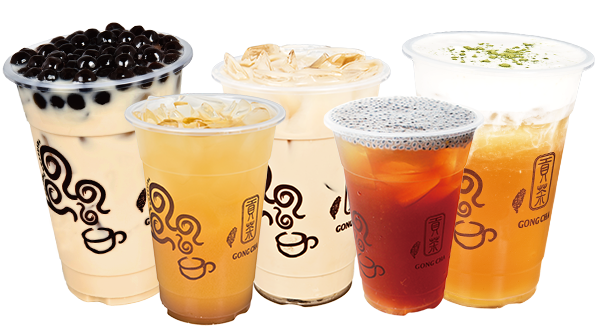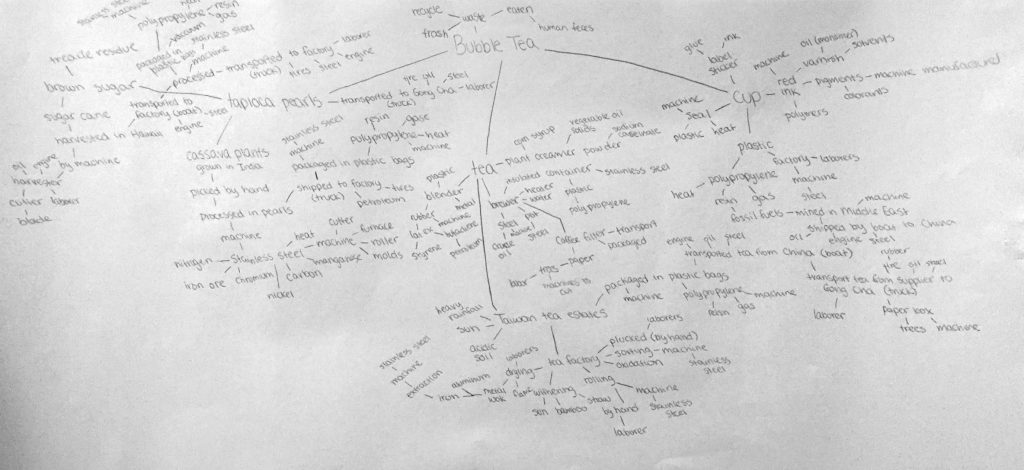- Use a simpler design on labels and logos= less ink
- Instead of the Middle East, mine it in Texas
- Invest in tea estates in a place closer than china, perhaps in Hawaii
- Use a reusable coffee filter
- Have a bigger recycling can to recycle the plastic cups instead of trash
- Use an energy saving blender
- Use a solar powered brewer
- Instead of packaging the tea in plastic, use recycled material
- Instead of transporting anything by plane, use boats
- Since the pearls are vacuum packed, transporting a large shipment at once instead of small, frequent shipping
- Guarantee fair pay and labor laws to the farmers on the tea estates
- Have production of cups in the US for lower controlled coal mercury emissions
- Implement reusable consumer cups, to save plastic
- Make more durable insulated containers, for longer use
- Create containers that hold tea freshness for longer than 4 hours, reduce the water boiling and tea use
- Give employees free tea after 4 hour expiration to decrease waste
- Use thinner cups to decrease amount of plastic
- Work with other bubble tea stores for group ownership of shipping, so one company can make multiple stops instead of multiple trips
- Make the parts on the blender (such as cap or blade) easily repairable/replaceable
- Use biodegradable cups for certain drinks, such as hot ones
- Easy repair on tea factory machines
- Create a healthier and organic plant creamer powder
- Give leftover tea to shelters on cold days as a form of warming up
- Plan smart and efficient farming practices
I think the best innovation would be to have customers buy a reusable cup from Gong Cha, so every time they come in, they could get their drink in the cup they brought. This would reduce how much plastic is needed to make one-time-use cups. To further make people bring their cup in every time, Gong Cha could offer a $1 save off of “cup tax”, where you can save some money, not necessarily $1, every time you have your cup. This would encourage people to be more conscious of the trash they leave behind and save the environment, because mining petroleum and making polypropylene is more damaging, to the earth and to our bodies. I think it is an innovation of efficiency because it reduces the environmental impact, economic impact (consumers can save money and the company can save money from ordering and shipping disposable cups), and create a more sustainable life cycle, especially at the end with the waste products. One externality is making the cups, which can be internalized by contacting and commissioning US manufacturers, who can regulate their products and support local businesses/domestic business, which results in less shipping.
I think an estimated price for these cups would be somewhere from $7-$10 in order to accommodate for most of the “costs”, but more realistically, people would buy it more if they regularly came or the price of the cups were cheaper ($5). By contracting with US manufacturers, you can save on long distance-trans pacific shipping, and also support domestic business.

